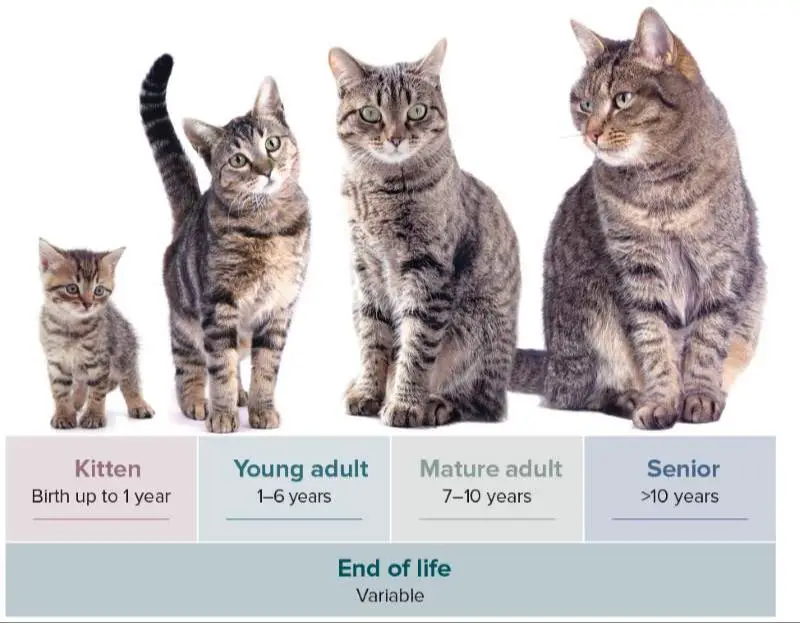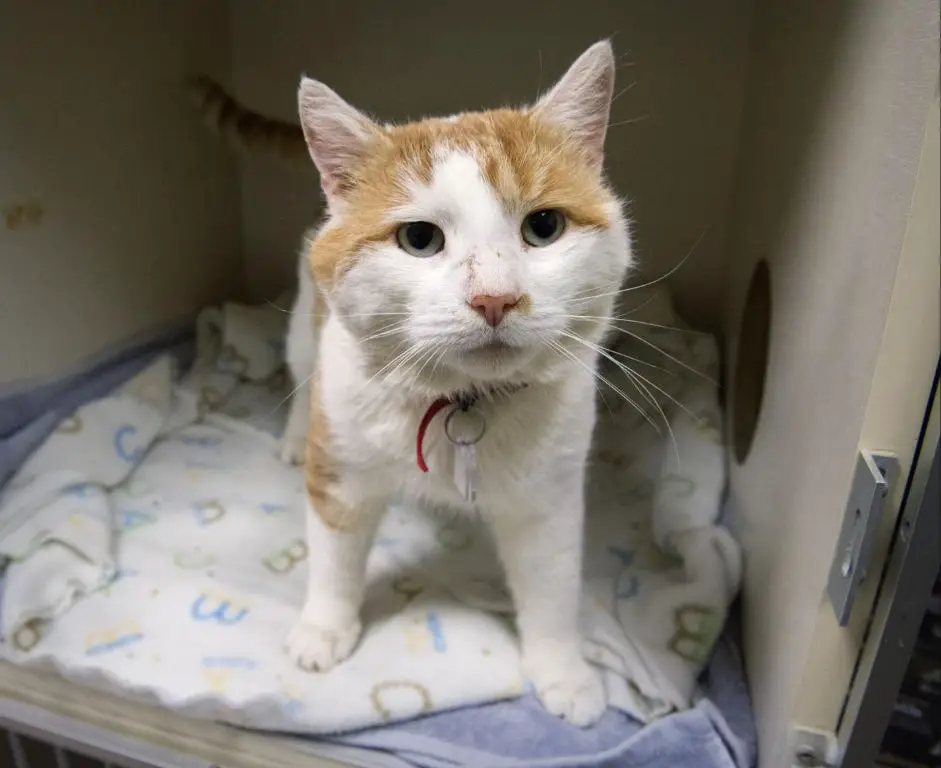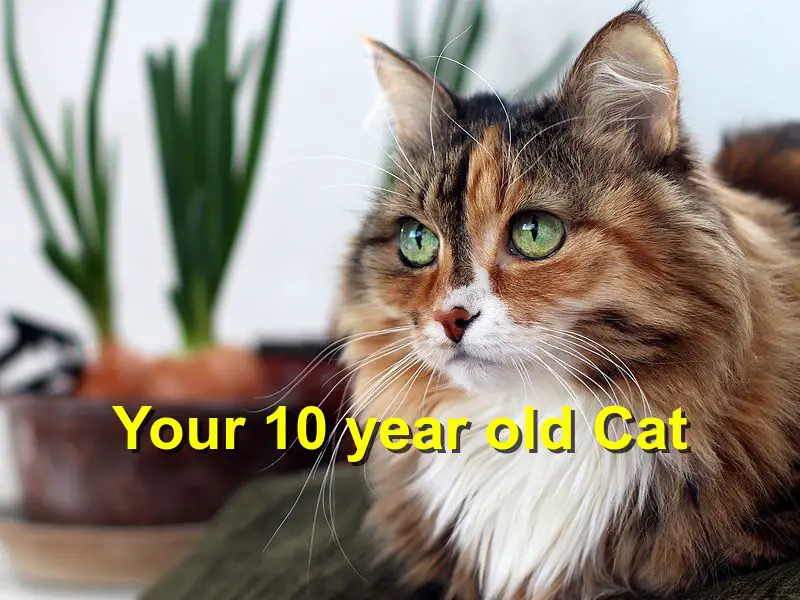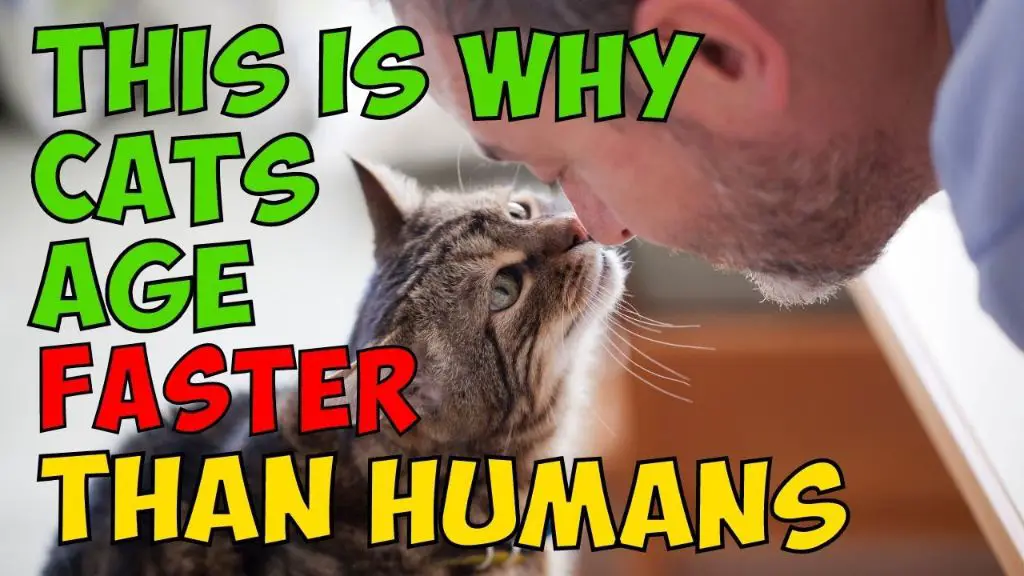This article will explain how to convert a cat’s age into equivalent human years. Knowing your cat’s age in human terms can help owners better understand their cat’s development and aging process. Comparing cat years to human years gives owners a frame of reference for their pet’s life stage and health needs. For example, it can indicate when a cat transitions into a “senior” and may require more veterinary care. Converting cat years into human years is just a simple mathematical equation, which we’ll cover step-by-step in this article. Understanding your cat’s age in human terms can ultimately help you provide the best care for your feline companion.
How Cats Age
Cats age much faster than humans in their first few years of life, but their aging slows down later on. In the first year, cats mature rapidly from kittens to young adults. A 1 year old cat is physically mature and equivalent to a 15 year old human. By age 2, cats reach the human equivalent of around 24 years old. From there, each additional year ages a cat around 4 “cat years”. So at age 3, a cat would be around 28 in human years. From around 3-5 years old, a cat is mature and equivalent to a human in their late 20s to early 30s.
After age 5, cats begin to age more slowly. From 6-10 years old, each cat year is approximately equal to 4 human years. An 8 year old cat would be similar to a 32 year old human. At age 10, a cat reaches middle age, comparable to a 40 year old human. From 11-14 years old, cats age more slowly with each cat year equal to about 5-6 human years. A 14 year old cat is similar to a 70 year old senior citizen. After age 15, cats are considered geriatric. Their aging continues to slow so each cat year may equate to 10 or more human years. A 20 year old cat would be similar to a 120 year old human.
1 Year Cat to Human

According to the Cat Age Calculator, the first year of a cat’s life is generally considered to be the equivalent of 15 human years. This means that a 1 year old cat has reached the maturity and development level of a 15 year old human. The rapid aging process for cats in the first year of life is due to kittens developing quickly from birth so they have the necessary skills and abilities to hunt and survive on their own. Just as humans mature faster in the first 15 years of life compared to subsequent years, cats also experience accelerated aging and development in their first year. So while a 1 year old cat may seem full grown, they are essentially still in the teenage stage of life when compared to human years.
2 Year Cat to Human
The second year of a cat’s life is equal to about 9 human years according to most experts. This is because cats mature and develop rapidly during their first two years. As Purina states, “The first year of your cat’s life is considered the equivalent of 15 human years. The second year adds nine more human years, so 2 cat years are approximately 24 human years.” This rapid aging in the early years is common for many animals that have a shorter overall lifespan compared to humans.

So while the first year of a cat’s life equals about 15 human years, that second year is considered to be another quick 9 years from a human perspective. This means a 2 year old cat has aged the equivalent of a human that is about 24 years old. After the first 2 years, cats tend to age more slowly in comparison to humans.
3-5 Year Cat to Human
Between 3 to 5 years of age, cats mature into full adulthood. At this stage, each additional cat year represents approximately 4 human years.[1] So a 3 year old cat would be about 36 human years old, while a 5 year old cat would be equivalent to a 60 year old human.
During this period cats reach their full size and muscle mass, females reach sexual maturity and males reach their maximum weight. Their physical growth and development slows down compared to their first two years. Mentally they become less playful and more independent.
While a 3-5 year old cat may seem fully grown, they are still relatively young and active. With proper care and nutrition, most domestic cats in this age range are in great health.
To summarize, each year from age 3 to 5 represents about 4 human years. So a cat at this stage is similar to a human in their 30s to 50s.
[1] https://www.purina.co.uk/articles/cats/senior/care/cats-age-in-human-years
6-10 Year Cat to Human
During the ages of 6 to 10 years, cats age approximately 5 human years for each year. So a 6 year old cat would be about 30 human years old and a 10 year old cat would be around 50 human years old. This period of maturity is similar to when humans reach their 30s through 50s.

According to Purina, cats between 6-10 years old are equivalent to about 42-60 human years. At this stage in a cat’s life they are fully grown adults and their aging begins to slow down compared to kittens and young cats.
So while the first couple years of a cat’s life age faster, between 6-10 years they settle into a more gradual aging pattern of about 5 human years for every 1 cat year. This is an important time to monitor their health and provide proper nutrition, exercise and mental stimulation.
11-14 Year Cat to Human
Cats aged 11-14 years are considered to be between 64-80 human years old. At this stage, cats are entering the senior and geriatric phases of life. Each year of a cat’s life during this period is equivalent to around 6 human years.
According to research from Purina, the conversion rate starts to slow down a bit during the later years. While the first two years of a cat’s life are equal to 25 human years, years 11-14 equate to roughly 6 human years per cat year. So an 11 year old cat would be about 66 in human years, a 12 year old cat around 72 human years, and so on.
This slowing of the aging process for cats in their later years is likely due to them being fully grown adults at this point. The accelerated aging early in a cat’s life accounts for their rapid development and growth during kittenhood and adolescence. Once cats reach mature adulthood by age 11-14, they tend to age more steadily like humans do.
15+ Year Cat to Human
After a cat reaches 15 years of age, each additional year is equal to about 4 human years according to most experts. This is because cats tend to age more rapidly once they pass the 15-year mark, which correlates to about 76 human years (Purina). So a 16-year-old cat would be around 80 in human years, a 17-year-old cat would be 84 human years, and so on.
The aging process slows down for cats as they get older just as it does in humans. For the first 15 years of a cat’s life, each cat year equals 4-5 human years. But after age 15, each cat year begins to equal more human years since cats age faster as senior cats. Generally each year past 15 equals about 4 human years. So while the first 15 years of a cat’s life are roughly comparable to the first 76 human years, each year after that is closer to just 4 human years.
In summary, cats age much faster than humans do for the first 15 years of life, with each cat year equaling 4-5 human years during that time. But after age 15, cats age more rapidly with every cat year equaling about 4 human years from that point on.
Why This Conversion
Cats age faster than humans during the first two years of life and then their aging slows down. This is why the conversion from cat years to human years is not linear. In the first year of life, a cat matures rapidly from a dependent kitten to an adult cat. A one year old cat is physiologically similar to a 15 year old human. The second year of a cat’s life again sees faster development compared to subsequent years. At two years old, a cat can be considered equivalent to a 25 year old human. After the first two years, cats age more slowly with each additional year.

According to research, cats age around 6-7 human years for every calendar year after the second year of life. So a 3 year old cat would be around 33 in human years. Between 5-10 years of age, each cat year equals 4 human years. An 8 year old cat would be equivalent to a 40 year old human. For cats over 10 years old, each additional year counts as 4 human years. A 14 year old cat would be similar to a 70 year old person.
This conversion reflects the biological differences between cats and humans. Cats reach sexual maturity around 1 year old and can live healthily into their late teens or early 20s. Humans in contrast reach maturity later and have longer average lifespans extending into their 70s or 80s. Mapping cat years to human years in a linear 1:7 ratio does not capture differences in aging between the species. The non-linear conversion aims to translate a cat’s expected development and aging into equivalent human years.
Recap
Knowing how cat years translate to human years can be valuable for cat owners. Properly understanding your cat’s age and life stage allows you to provide them the best possible care. This guide discussed how the first 2 years of a cat’s life are roughly equal to the first 25 years of a human’s life. Cats then age more slowly, with each subsequent year equivalent to about 4 human years. So a 5 year old cat is similar to a 40 year old person, and a 10 year old cat is like a 55 year old. The exact conversion isn’t perfectly precise, but gives a helpful framework. The key is realizing cats mature quickly at first but then their aging slows. Armed with this knowledge, you can now better interpret your cat’s age and life stage. You’ll be able to provide them with the care, nutrition, activity levels, and health monitoring appropriate for where they’re at. Understanding your cat’s age in human years allows you to maximize their quality of life and your bond with them.
